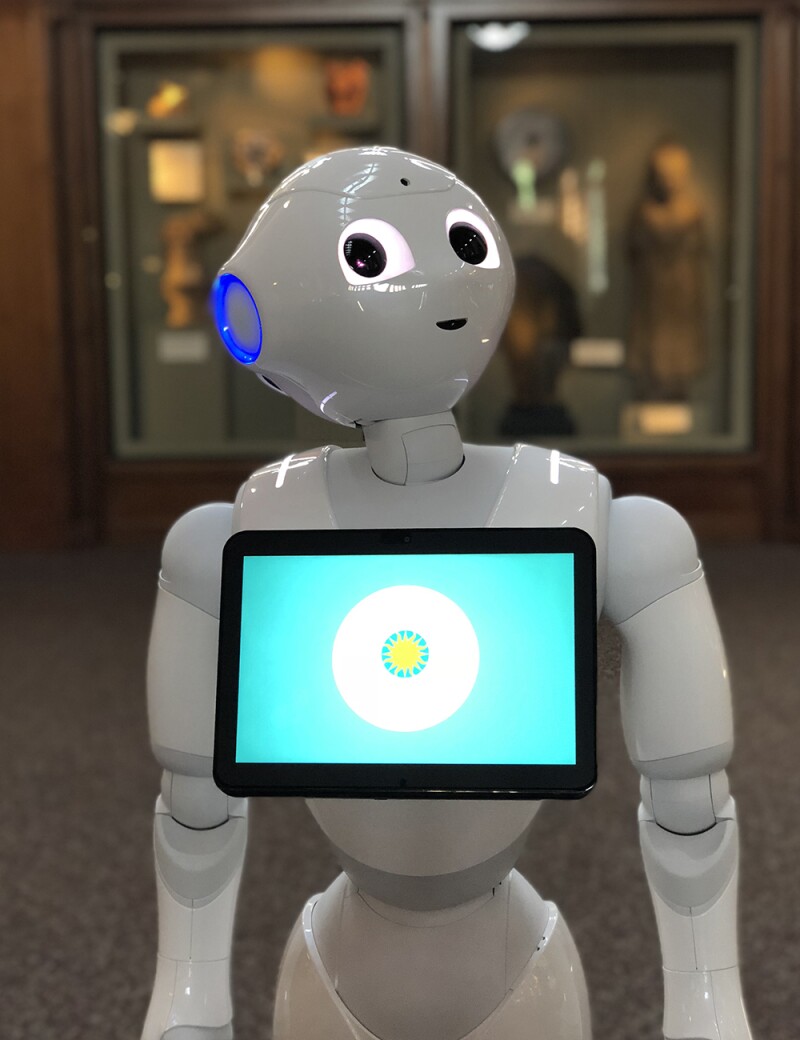Yes, the robots are taking our jobs. Last week, the Smithsonian Institution in Washington, D.C., powered up a cartoonlike humanoid robot named Pepper—25 of them, in fact—and became, in its own words, “the first museum, research, and education complex in the world to experiment with this new and innovative technology.”
The four-foot-tall androids, donated to the Smithsonian by San Francisco–based SoftBank Robotics, aren’t entirely new: Pepper showed up late last year in the lobby of the Courtyard by Marriott in Anaheim, California, and in the 23rd floor “Sky Lobby” of the Mandarin Oriental in Las Vegas, and travelers passing through the Oakland International Airport may recognize the robot’s perma-grin from the Pyramid Ale Taproom, where she schmoozed with customers and bumped food and beverage sales by 17 percent. “She grabs their attention faster than we can, so she’s made it a lot easier,” said one soon-to-be-former restaurant supervisor.

Pepper’s hands feature grippy tactile sensors.
Courtesy of SoftBank Robotics
For now, the Smithsonian’s Pepper is a bit more Teddy Ruxpin than C-3PO: She can can answer museum visitors’ frequently asked questions, tell a few stories and play family friendly a game or two, do a little robo-jig, and, of course, collect your email address on her chest-mounted tablet. And to its credit, the Smithsonian is hardly overselling Pepper’s sentience: “All exchanges are pre-scripted—the robots do not yet have natural conversation abilities,” notes the website. So as long as your immediate expectations for the future include finding the restroom and posing for a selfie, Pepper’s got you covered.
That said, the institution’s curation and education teams are working to make the most of Pepper’s talents. In the National Museum of African Art, for instance, the robot has been programmed to translate Swahili words and phrases for visitors of the exhibit World on the Horizon: Swahili Arts Across the Indian Ocean, which opens on May 9. In other Smithsonian spaces, notably the National Museum of African American History & Culture, Pepper’s mere presence is dramatically boosting foot traffic to less-visited exhibits.
Pepper features an array of ultrasonic, laser, and obstacle-avoidance sensors to keep her from knocking over priceless national treasures or Grandma. She can discern visitors’ emotional state by scanning facial expressions and tone of voice, and her hands feature tactile sensors so she can fully experience your puny human handshake.

The Smithsonian’s new guide, Pepper.
Courtesy of the Smithsonian Institution
If you’re headed to the the District of Columbia, look for a member of the Smithsonian’s Pepper Posse at one of five locations:
- Smithsonian Castle: Tuesdays and Thursdays, 9 a.m. to 3 p.m.; Fridays, Saturdays, and Sundays, 10 a.m. to 4 p.m.
- Hirshhorn Museum and Sculpture Garden: Mondays, Thursdays, Fridays, and Saturdays, 2:30 to 3:30 p.m.
- National Museum of African American History and Culture: Thursdays and Sundays, 11 a.m. to 12 p.m. and 2 to 3 p.m
- National Museum of African Art:Tuesdays, 10 a.m. to 12 p.m.; Wednesdays, 2 to 4 p.m.; Thursdays, 10 a.m. to 12 p.m.; and Saturdays, 10 to 11 a.m.
- Smithsonian Environmental Research Center: Tuesdays and Fridays, 3 to 4 p.m.











